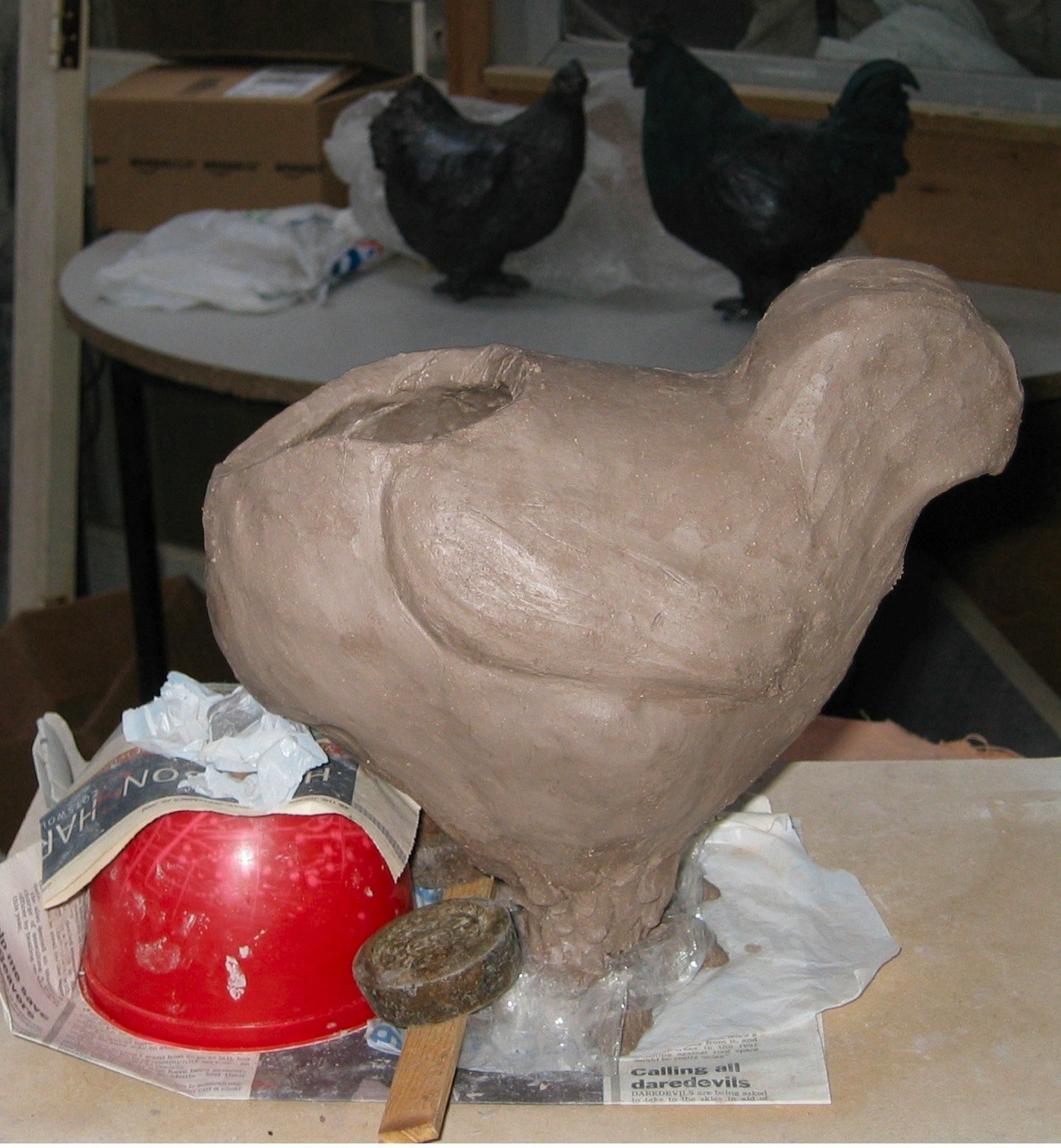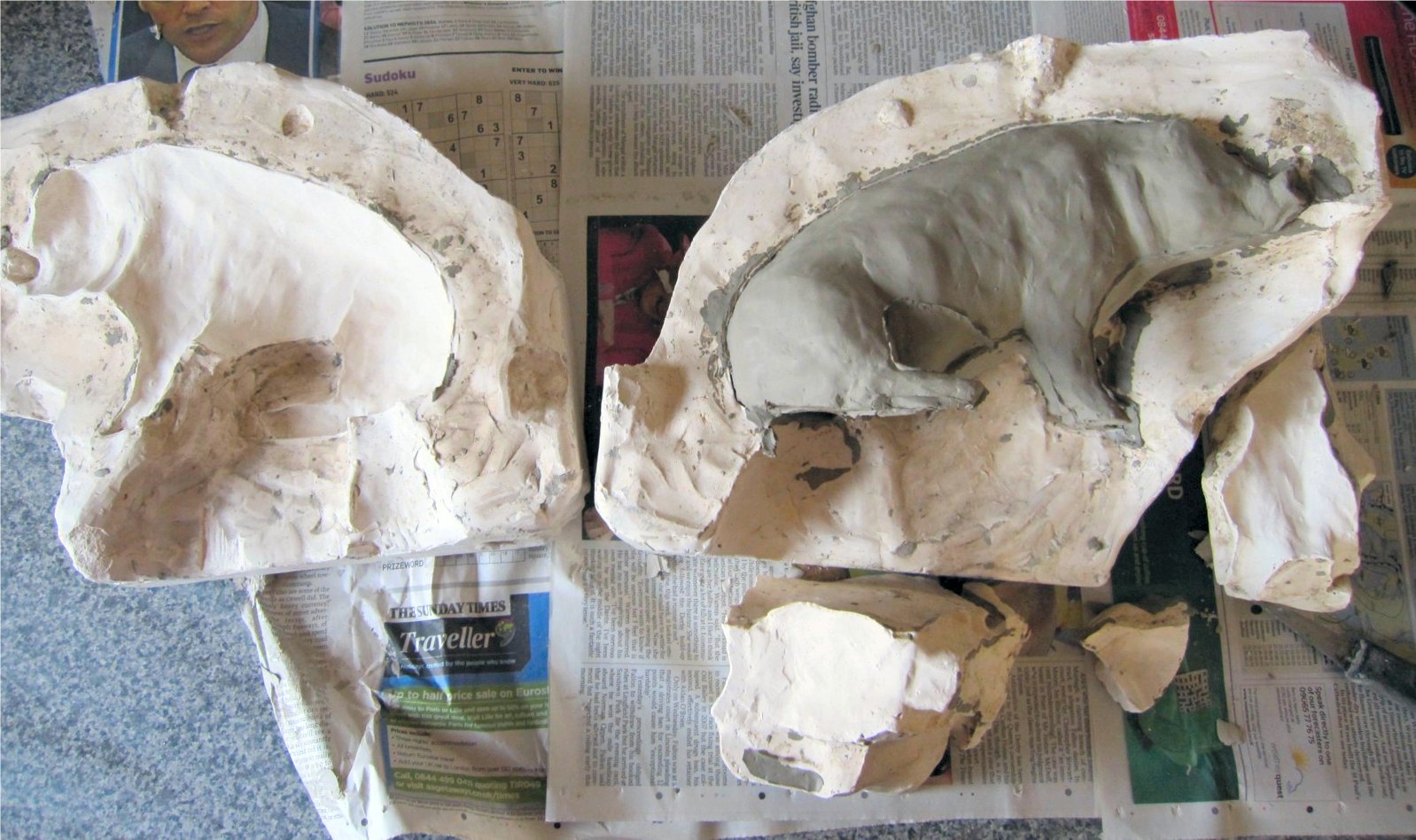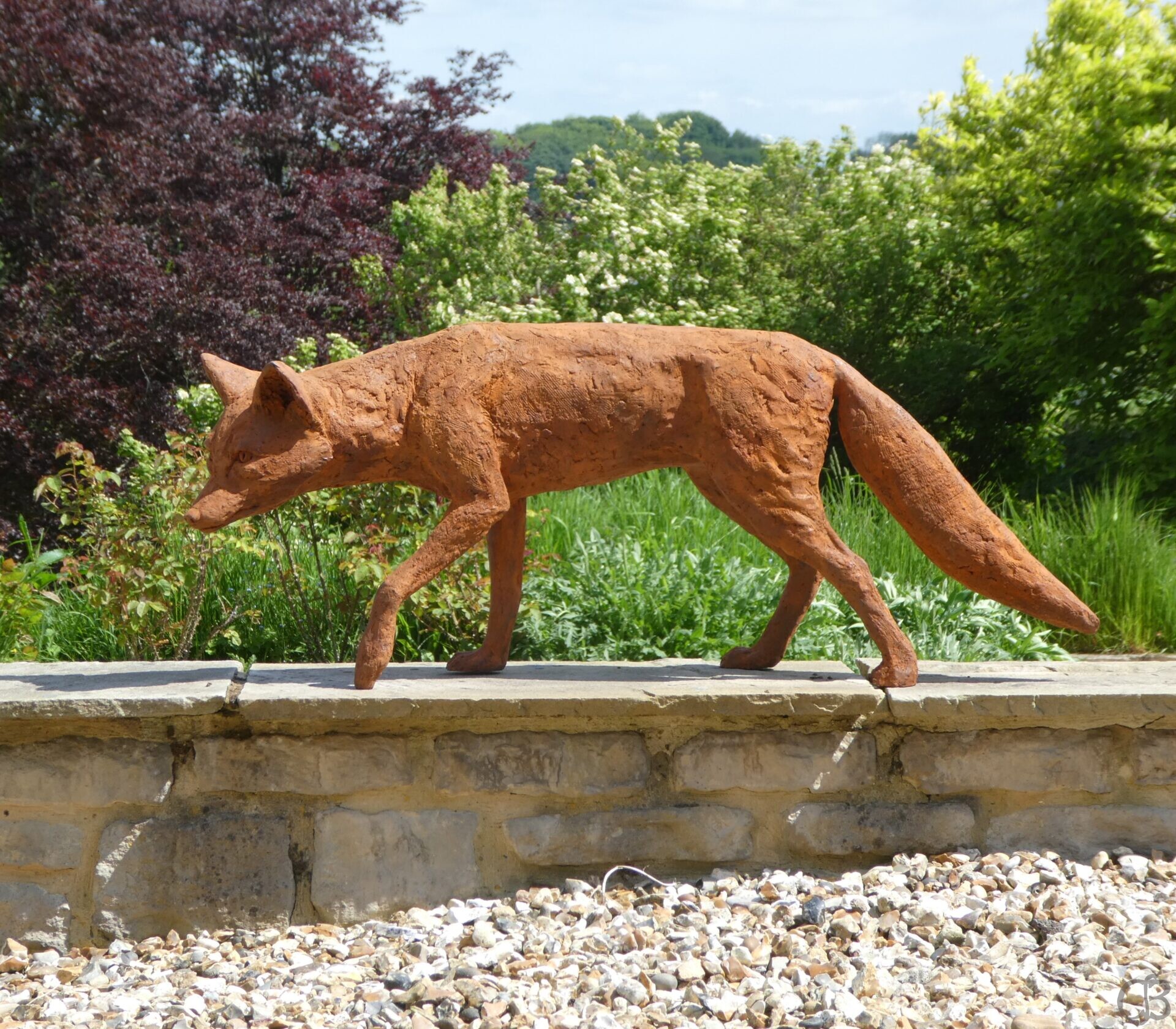Sculptures to be fired must be hollow. Care has to be taken that air is not trapped inside any part, and also that the thickness of the clay throughout is fairly consistent in order to minimise stresses and strains during the drying out process.
A clay sculpture destined for kiln-firing may be:
- Hand-built using slabs or coils
- Slip-cast
- Built solid and hollowed out afterwards
Hand-building
Because it is not normally possible to have a supporting armature of any kind of metal inside a clay sculpture which is going to be fired, it must be built up in sections, which are allowed to stiffen and dry to a certain extent before the next portion is added so that the sculpture is strong enough to support itself. The piece must not be allowed to dry out too much however, otherwise the difference in shrinkage between a dry area and a newly added moist clay part could cause cracking and splitting.

Larger pieces will need strengthening and reinforcing at points of stress, for example inside the back of a human figure, or where a limb joins a body. This can be achieved by adding extra coils of clay, but always taking care not to have any area with too great a thickness relative to the rest.
As with any vessel or form to be fired, at least one good air hole must be included (normally underneath) as otherwise the heat of the kiln would cause the piece to shatter from the expansion of air trapped inside the hollow form.
Surface details are added or carved in once the form is complete and firm (though not dry) as otherwise they would be obliterated when the next piece of clay is joined to the form. Some degree of thickness can be added (e.g. tail feathers on the cockerel above) but once again always bearing in mind the firing process. It helps if air-holes are made through thicker areas to the hollow inside with a tool like a wooden skewer. The outer surface can easily be restored, and any air trapped in the thicker clay will be safely released inwards, and then out through the main air-hole.
Slip casting
In a way this method combines the two approaches: firing and casting. Initially, a clay sculpture is built as for casting, but a different kind of mould, called a piece-mould, is then built around it in sections made from plaster. The reason for the name is that because plaster is a rigid material (unlike silicone rubber), in order that each piece of the mould can be withdrawn from the sculpture there must be no overhangs or undercuts for any one section. This means a mould may be made of many pieces, and making the mould can be a complicated process.

The reason for making a plaster mould is that once fully dried and re-assembled, it can be filled with slip [clay in liquid form]. The plaster draws moisture out of the slip, and a thin skin of clay will begin to form all round the inside of the mould. Once this is thick enough, the excess slip is poured out, and when the clay form has stiffened sufficiently, the mould is opened carefully section by section and taken away from the hollow clay form within.
The clay sculpture which is now revealed will need to have the marks left by the joins of the mould (known as seams) neatened up, or ‘fettled’. The hole through which the unneeded clay slip was poured out may need to be filled as well, although an air hole will still be needed for the firing process.
Complicated details which would be difficult or impossible to release from a plaster mould [such as the ears on the pig shown] may need to be added at this stage.
Plaster moulds are heavy for their size, especially when filled with clay slip, and so this method is really only suitable for smaller and simpler sculptures.
Building solid & hollowing out
This normally involves cutting the finished piece completely through, so that clay can be removed from the middle. Afterwards the two parts are carefully joined back together with slip, and the surface details restored. This method is only suitable for relatively small pieces and simpler shapes.
